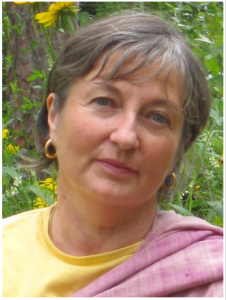In spiritual development, it is difficult to talk about ‘sobriety’ without talking about its opposite. Ecstatic states have long been a part of religious and spiritual literature and traditions. The poetry of Rumi is full of images of ecstatic states that speak eloquently of his love for the Divine. The Whirling Dervish dances that he created are celebrations of an ecstatic joining of human with the divine. Even attending a performance by the Whirling Dervish Sufis can give you a taste of this mystical union. The Tantric literature of Hinduism speaks to the joy possible in the physical consummation of love. In the early 1960s, I remember an Anglican Church minister speaking in near mystical terms of the union between man and woman being a reflection of the union between man and God. In Buddhist yoga, Tantric meditation largely centres on the inner study of the veins, channels and drops which, once mastered, bring about a state of blissful union, exemplified in the yab-yum figures. Thus, within the Buddhist tradition, Tantra is usually practiced at the mental level, less frequently at a physical level.
Westerners may rebel against images of spikes piercing a living body seemingly without pain or be repulsed by pictures of people carrying a cross wearing a crown of thorns or being crucified on purpose. Some experiences are scientifically plausible, like lying on a bed of nails or walking over hot coals, but others are not.
By contrast, we have periods in religious history of ‘anti-ecstasy’ such as the period ushered in by the Reformation and continued by the Puritan fathers of North America, the Calvinists and others. Within some Theravadan and Mahayana Buddhist communities there is a complete embargo on alcoholic drink of any kind. But, within contemporary Western Buddhist traditions, we have every permutation from complete sobriety to drunkenness tolerated and even enabled by communities.
There is a Buddhist precept, taken by all serious practitioners, that goes like this: “I undertake to train myself to refrain from taking intoxicants.” Some centres add “to the point of heedlessness” or alter the vow to refraining from taking “substances that cloud the mind.” Psychotropic drugs are usually included in this precept. The question often comes up, “Does that mean I cannot have an occasional glass of wine?” How that question is answered depends on the centre and its orientation to the consumption of alcohol but even when there is acquiescence to participating in a societal ‘norm’, the idea of drinking to the point of heedlessness or drunkenness would be considered a breaking of the precept.
So, how does a present seeker of truth approach this ecstasy/sobriety dilemma? An initial step, to my mind, is to contemplate the nature of addiction. A spiritual ‘high’ can be as addictive as the gloom espoused by some Buddhists that ‘all is suffering,’ so nothing can be done but bear it. If we are honest with ourselves, we can determine which side of this equation we fall into.
If we are constantly searching for ways to be ‘up’, then we may fall into the first category and therefore we need to become more ‘sober’. That will probably include becoming more realistic about the spiritual path. Or it might mean we need to check ourselves to see if we are capable of ‘making a peanut butter sandwich’ for our children within moments of completing our meditation practice. In other words, is our spirituality grounded or are we able to ground ourselves swiftly after a practice that may bring about an ecstatic or mystical state?
If we are continually seeing life as a set of diminishing returns, we may have become too ‘sober’ and need to open up to the beauty and joy that can be found in religious art or music.
The balance, for me, is most easily found by going into nature. A beautiful sunset can move my heart to ecstasy and an overly strenuous hike can sober my outlook, especially as I move into my seventies.
Whether sober or in ecstasy, we should always strive to promote careful mindfulness of whatever is arising in the mind and in the body. Through awareness, we can most easily ‘see’ what is going on and in later development will be able to detect the more subtle state of bliss that accompanies deeper understanding.
“When all is reduced to the One, to what is the One reduced?” This question can only be answered when the balance between sobriety and ecstasy has been achieved.
copyright © 2014 by Catherine Jetsun Yeshe

For more on Catherine, please visit www.friendsoftheheart.com.











